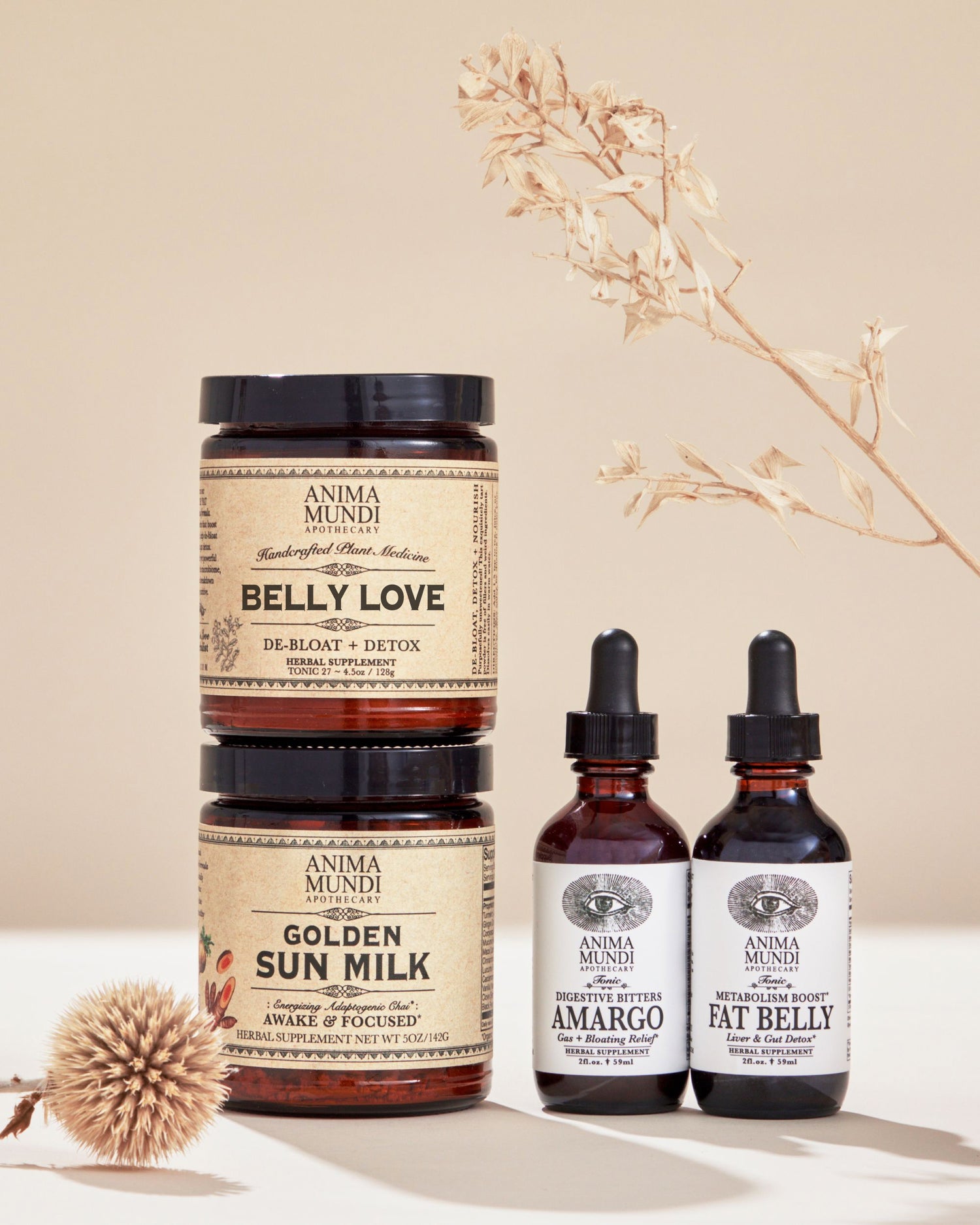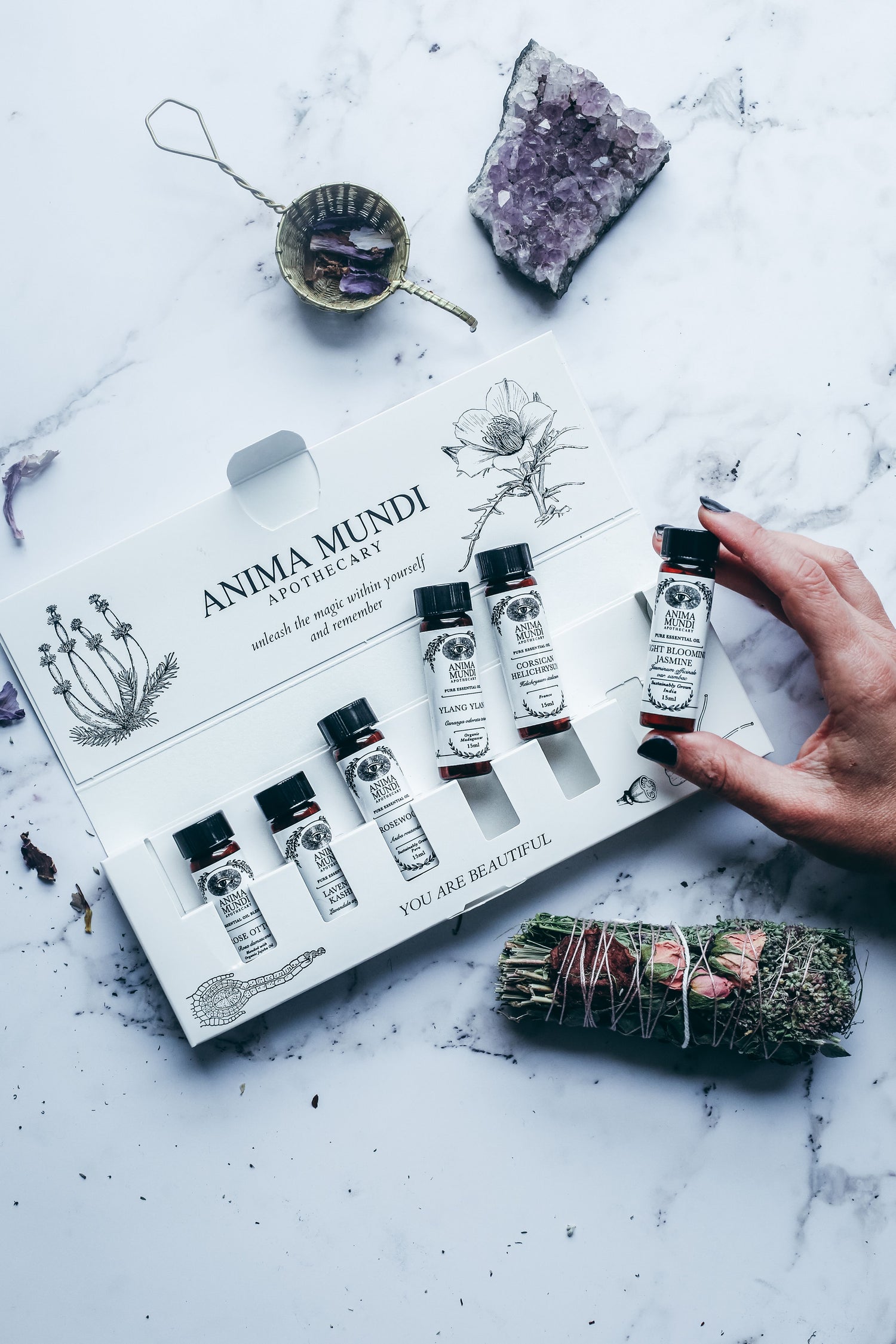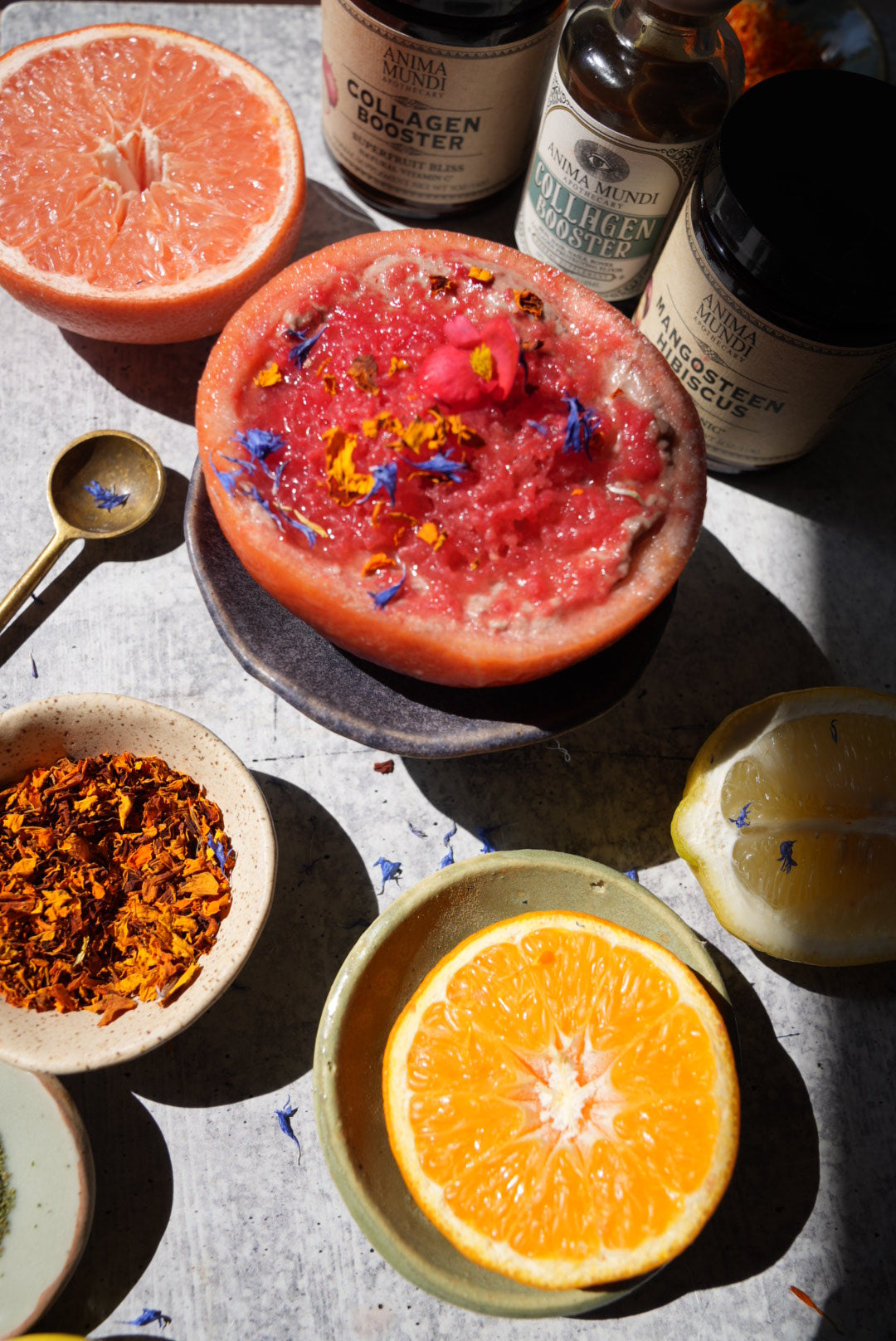As the earth shifts from the vibrant heat of summer into the quieting coolness of autumn, we find ourselves at a powerful threshold: the Autumnal Equinox. This celestial event on September 22, 2024, marks the balance between day and night, a moment when light and dark exist in perfect harmony. It’s a time to pause, reflect, and realign with nature’s rhythms—an opportunity to embrace new self-care rituals that honor both our inner and outer worlds.
Fall is a time of harvest, both literally and metaphorically. In the natural world, trees release their leaves and animals prepare for the coming winter. Similarly, humans can use this period to release what no longer serves us, gather our resources, and nurture ourselves for the quieter, more introspective months ahead. Self-care during the Autumnal Equinox is all about balance—balancing rest with activity, reflection with action, and releasing with receiving. In terms of our work with plant medicines, this is a time to focus on grounding and nourishing remedies that support the immune system, ease the transition to cooler months, and help prepare for the internal work of winter.
Ancient traditions have always understood the profound significance of seasonal shifts. Many cultures approach equinoxes as moments to renew our connections to the earth and spirit. It’s a very special (and potent!) time for rituals that seek to bring equilibrium to the physical, emotional, and spiritual bodies, allowing us to enter the next phase of the year with greater clarity and purpose. Let’s explore how to incorporate some of these ancient practices into modern rituals, using plant medicine, aromatherapy, and global traditions for deep, holistic self-care that is simple yet effective.
Sacred Scents to Honor Balance + Renewal
If you’re looking to flow into fall—rather than resisting the end of summer or lamenting the impending winter—the power of scent can help deepen your connection to this season of transformation. Aromatherapy and medicinal scents have been used for centuries in healing and spiritual practices and were among the first forms of medicine ever administered. Harnessing the power of plant-based oils to support emotional and physical balance, essential oils work directly on the limbic system, which regulates emotions, memories, and even immunity. The following oils are particularly helpful for grounding, calming, and restoring balance during the equinox:
Frankincense: Among Frankincense’s many attributes is its use as a spiritual tool for ritual, prayer, and meditation. Used in worship for thousands of years, it is valued both for its many healing powers and for its intoxicating fragrance. Frankincense can properly be said to belong to the family of sacred scents, making it a trusted ally for seasonal rituals and spiritual practices. Its grounding and clarifying scent makes it ideal for meditation and reflection, especially during transitional periods. Frankincense oil can be diffused in the home to promote emotional stability or applied to the skin (diluted in a carrier oil) to enhance relaxation and deep breathing. It will turn the fragrance of your home into that of a temple!
A few drops of this high-quality Frankincense oil can be applied to the palms, rubbed together, and directly inhaled. This produces an instantaneous clarifying effect and a strong activation of the life force (prana). Frankincense essential oil can also be mixed with a carrier oil such as coconut or sesame and massaged into the skin to help the body stay limber and relaxed. A few drops of the oil can be sprinkled on a hot, wet towel and applied to the chest to open the lungs and enhance deep breathing. It is particularly helpful for those who practice yoga.
 Bhutan Cypress: Traditionally used to beautify the skin and invigorate the mind, Cypress essential oil can also deepen and expand the breath. That’s what makes it especially beneficial to use in your diffuser or formulations in times of stress, loss of sleep, or hormonal challenges. It offers a wide range of applications when its astringent properties are called for, such as when there are oily, teenage/troubled, or sweaty conditions. For the mind, Cypress is known to have a refreshing, cleansing effect that can dispel worry. Diffused, invigorating cypress oil will clear the air whenever it has been left heavy or stagnant. Cypress is a useful oil for promoting concentration and productivity.
Bhutan Cypress: Traditionally used to beautify the skin and invigorate the mind, Cypress essential oil can also deepen and expand the breath. That’s what makes it especially beneficial to use in your diffuser or formulations in times of stress, loss of sleep, or hormonal challenges. It offers a wide range of applications when its astringent properties are called for, such as when there are oily, teenage/troubled, or sweaty conditions. For the mind, Cypress is known to have a refreshing, cleansing effect that can dispel worry. Diffused, invigorating cypress oil will clear the air whenever it has been left heavy or stagnant. Cypress is a useful oil for promoting concentration and productivity.
Our Bhutan Cypress Essential Oil is distilled from Cypress leaves and branches hand-harvested from trees that soar up to 150 feet into the sky. The pristine environment in Bhutan endows this refreshing elixir with potent aromatherapeutic qualities. This Bhutan Cypress aromatic profile lends itself to soothing hormonal imbalances and promoting deep, restful sleep.
Australian Sandalwood: A sacred scent in Hindu and Buddhist traditions, Sandalwood is renowned for promoting inner peace and grounding energy. It is an ideal oil for grounding self-care and meditative rituals, especially useful during seasonal transitions, helping to calm the mind and encourage introspection. Sandalwood has a deep, nutty, and earthy aroma with a pronounced woody finish. Sandalwood’s history goes back to ancient times when it was used as an oil or an incense for spiritual inspiration. The oil is steam distilled from the branches and twigs of sandalwood trees. Australian Sandalwood has a rich, woody, smoky scent with sweet notes that compliment its balsamic base tones. This oil stays on the skin longer than most and has a dry-woody aroma once it is set. It blends well with any essential oil.
Tea Tree: As a purifying oil, Tea Tree helps cleanse the body and boost immunity, particularly as we move toward the colder months. Its antimicrobial properties make it an essential oil for supporting wellness during the autumn season. One of the most well-known oils for cleansing, Tea Tree is an important addition to your home medicine cabinet and first aid kit due to its fast and effective healing capabilities. It has also shown a high degree of efficacy in clearing and promoting healthy nails and can also be applied topically in ointments, salves, and compresses to encourage skin health. When properly diluted, it is an important oil for cleansing and restoring healthy skin tissue.
Vetiver: Known as the “oil of tranquility,” Vetiver has a deep, earthy scent that is both grounding and calming. Its roots absorb rich compounds from the soil, making it a powerful tool for stabilizing emotions, reducing anxiety, and promoting restful sleep. Ayurvedic medicine describes vetiver oil as cooling to pitta (anti-inflammatory), yet pacifying to vata (calming and comforting to the mind). With its deep, complex fragrance, this is one of the most biochemically diverse of all essential oils. Vetiver is a perfect addition to your equinox rituals for its grounding and calming effects, whether used in massage oils, meditation, or sleep rituals. It offers emotional stability and deep physical relaxation.
Here’s how you can incorporate Vetiver into your self-care routines:
- Sleep Support: Vetiver’s soothing magic is a powerful sleep aid. Try 4 or 5 drops in your diffuser at bedtime or create a sleep-inducing foot massage oil by combining 6 drops of vetiver with a tablespoon of carrier oil. Luxuriate in a long, slow foot massage, focusing on the joints and arches.
- Skin Soothing: After sun exposure or when your skin needs extra care, vetiver is excellent for cooling and repairing the skin. Create a heat-reducing body oil by combining 2 tablespoons of carrier oil with 4 drops of vetiver, 4 drops of chamomile, and 4 drops of helichrysum. Apply in gentle, slow strokes to soothe and nourish your skin.
- Meditation: For meditation, vetiver helps stabilize concentration and create a sense of rootedness. Rub a few drops in your palms, cup them over your face, and breathe deeply. Visualize yourself sending roots into the earth, arriving fully in your meditation practice.
Incorporating these essential oils into your self-care routine—whether through diffusers, baths, or anointing oils—can enhance emotional balance and provide physical support during the equinox.

Supporting Yin Energy
In Traditional Chinese Medicine (TCM), autumn is governed by the metal element and is associated with the lungs and large intestine. These organs are responsible for eliminating what no longer serves us—both physically and emotionally. Autumn invites us to nourish yin energy, which embodies reflection, quiet, and inward focus. By supporting the lungs and large intestine, we help release grief and other emotional burdens, mirroring the falling leaves of autumn. Autumn is naturally a more yin time, and embracing this energy can help prevent feelings of dryness, anxiety, and imbalance. These practices from Chinese Medicine may be supportive of your autumnal self-care:
Nourish the Lungs: The lungs are sensitive during autumn, making it important to protect them with warm, moist foods like soups, congee, and herbal teas. Herbs like Astragalus, Nettle, and ginger are excellent for boosting lung health and immunity. Try our Breathe Tea, an organic lung tonic with these herbs, plus Holy Basil, Milky Oats, Reishi, and Mullein to boost respiratory function.

Breathing Exercises: Deep, mindful breathing practices help to strengthen the lungs and clear out emotional and physical toxins. Qi Gong and Tai Chi movements can be integrated to help balance energy flow. Keep an eye on our Event Calendar for upcoming community breathwork practices.
Acupressure: Stimulating key points along the lung and large intestine meridians, such as the point called "He Gu" (located between the thumb and index finger), can help release stagnation and support the body’s natural detoxification processes. For further support hitting refresh on your digestion and detox pathways, check out our full Detox Collection here.

Pacifying Vata Dosha
In Ayurveda, autumn is considered a Vata season. Vata, which is composed of air and ether, governs movement, change, and lightness. When balanced, Vata promotes creativity and adaptability, but when imbalanced, it can lead to anxiety, dry skin, and irregular digestion—common complaints as the weather cools. To keep Vata dosha in balance during the fall, Ayurveda recommends warming, grounding, and nourishing self-care practices. Here are a few simple yet essential Ayurvedic tips:
Warming Foods: Cooked, oily, and warming foods like root vegetables, ghee, and spices such as cinnamon, turmeric, and cardamom help to counterbalance Vata's cold and dry qualities.

Herbal Teas: Sip on warming herbal teas like ginger, cinnamon, or tulsi to stay hydrated and support digestion. Tulsi, or holy basil, is especially revered in Ayurveda for its adaptogenic and calming properties, helping to manage stress and bring the body into balance.
Abhyanga (Self-Massage): Massaging the body with warm sesame or almond oil is deeply grounding and helps to soothe the nervous system, support circulation, and keep the skin moisturized.
Dincharya (Daily Routine): Ayurveda stresses the importance of a daily rhythm, especially during transitional times. Rising early, following a regular meal schedule, and winding down with evening rituals can help keep Vata in check.
Ancestral Equinox Traditions to Inspire Craft Care
Around the world, many cultures celebrate the Autumnal Equinox as a time of reflection, gratitude, and preparation for the coming winter. Each tradition offers unique insights into how we can care for ourselves and connect with the earth during this sacred time.
Mabon (Celtic Tradition): In Celtic tradition, the Autumn Equinox is known as Mabon, a time to give thanks for the harvest and the abundance of the earth. It’s a time for feasting, sharing food with loved ones, and preparing for the darker half of the year. Self-care rituals during Mabon might include foraging seasonal herbs and fruits, preparing nourishing meals, and offering gratitude to the earth.

Shūbun no Hi (Japan): In Japan, the Autumn Equinox is a national holiday known as Shūbun no Hi. It’s a time to honor one’s ancestors, visit family graves, and reconnect with nature. Rituals often include cleaning the home, preparing seasonal foods, and spending quiet time in contemplation. For personal self-care, this is a time for reflection and making space for ancestral healing.
Navaratri (India): In Hindu tradition, Navaratri is a festival dedicated to the goddess Durga and occurs around the autumn equinox. It celebrates the triumph of light over darkness, purity over impurity, and knowledge over ignorance. Navaratri is often observed with fasting, prayer, and reflection, making it a time of spiritual renewal and cleansing.
Bringing all these global traditions and healing modalities together, you can craft a self-care practice that is both deeply personal and profoundly connected to the earth’s rhythms. Here are a few ideas to get you started:
Set Intentions: The equinox is a potent time for setting intentions. Reflect on what you wish to release and what you hope to cultivate during the coming months. Writing these intentions down and revisiting them throughout the season can help you stay aligned with your goals.
Create a Sacred Space: Designate a corner of your home where you can retreat for quiet reflection. Add autumnal elements like dried herbs, candles, and objects that symbolize balance to you. This space can be used for meditation, journaling, or simply taking time to breathe.
Grounding Tea Ritual: Brew a tea using grounding herbs like rooibos, cinnamon, or ginger. As you sip your tea, reflect on what grounds and nourishes you in this season of transition.
Moon Rituals: Honor the balance of light and dark with a moon ceremony. Whether it's new moon intention-setting or full moon release, use the energy of the equinox to deepen your connection with the lunar cycle.
End the Evening with Intention
As equinoxes invite reflection, it’s important to end your day with intention, allowing the rituals of the day to fully integrate into your body, mind, and spirit. The equinox is a time to acknowledge both the light and shadow within, making space for both joy and letting go
Here’s a simple, intentional practice to close out your Autumnal Equinox evening:
- Journaling: Spend 10-15 minutes reflecting on the day. Consider what you are ready to release as we move into the darker half of the year. Write down what you’re grateful for, and set intentions for the next season of your life.
- Gratitude Meditation: Close your eyes and take a few deep breaths, focusing on the people, experiences, and things you are grateful for. Feel the warmth and light of this gratitude filling your heart, grounding you into the present moment.
- Light a Candle: Symbolically honor the balance of light and dark by lighting a candle and placing it in your sacred space. As the flame flickers, allow it to represent both your inner light and the shadows that help you grow. Take a moment to reflect on how you can maintain balance in the coming weeks.
- Herbal Bath: End the day with a soothing herbal bath using rosemary, sage, or lavender. The warm water, combined with the healing properties of the herbs, helps relax your body and ease any remaining tension from the day.

The Autumnal Equinox offers a profound invitation to restore balance within ourselves and with the natural world. It’s a powerful time to reconnect with nature’s cycles, nourish your body with seasonal herbs, and cultivate balance within. As we prepare for the quieter months ahead, may we begin to embrace autumn’s inward-looking energy. Savor this opportunity to find deep renewal, setting the stage for a season of reflection, self-care, and transformation. Happy Autumnal Equinox!


















